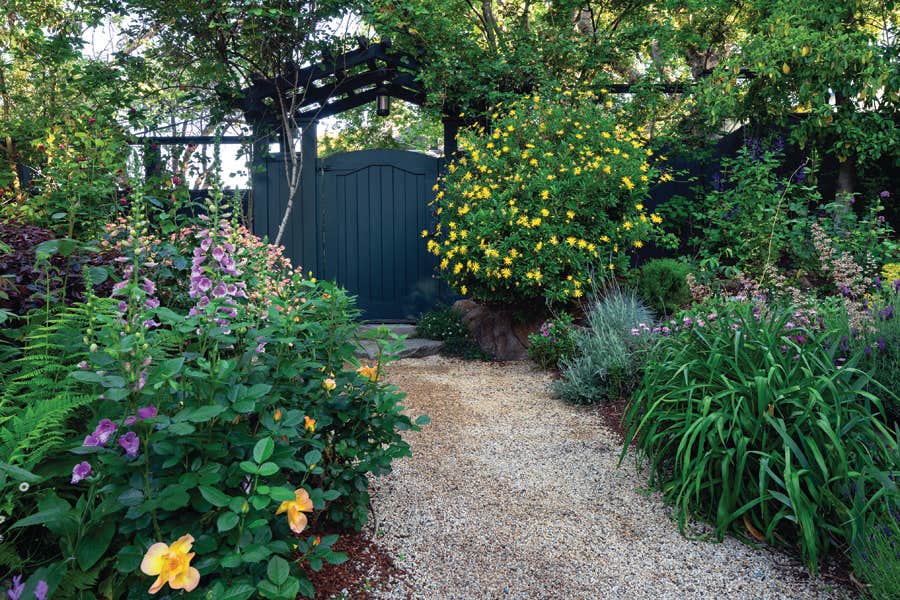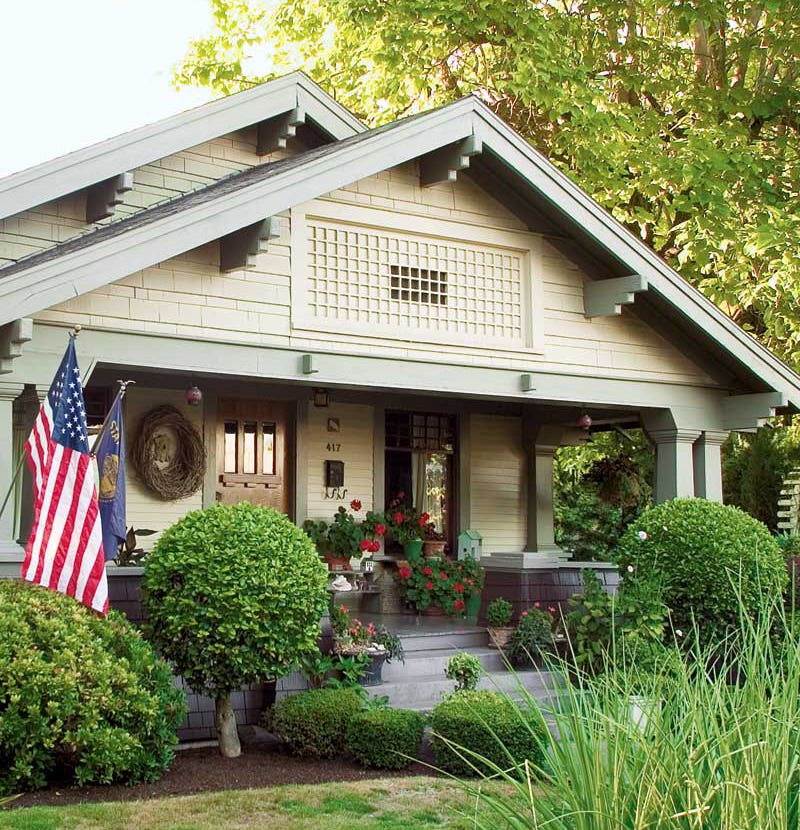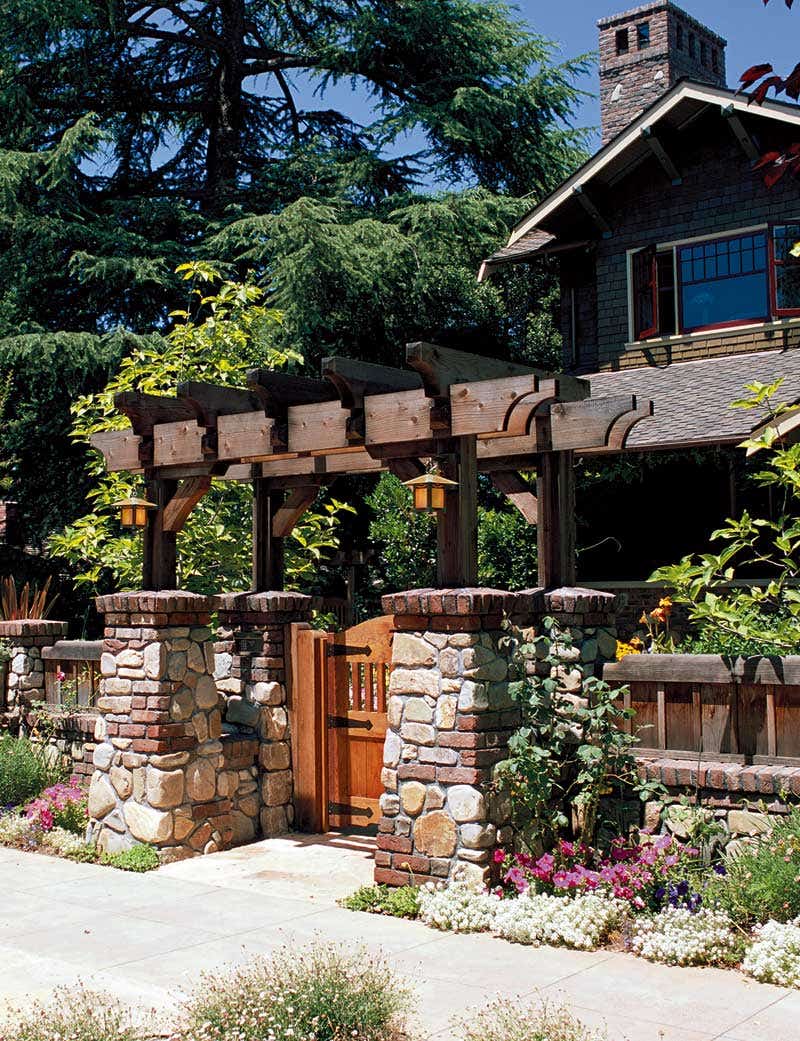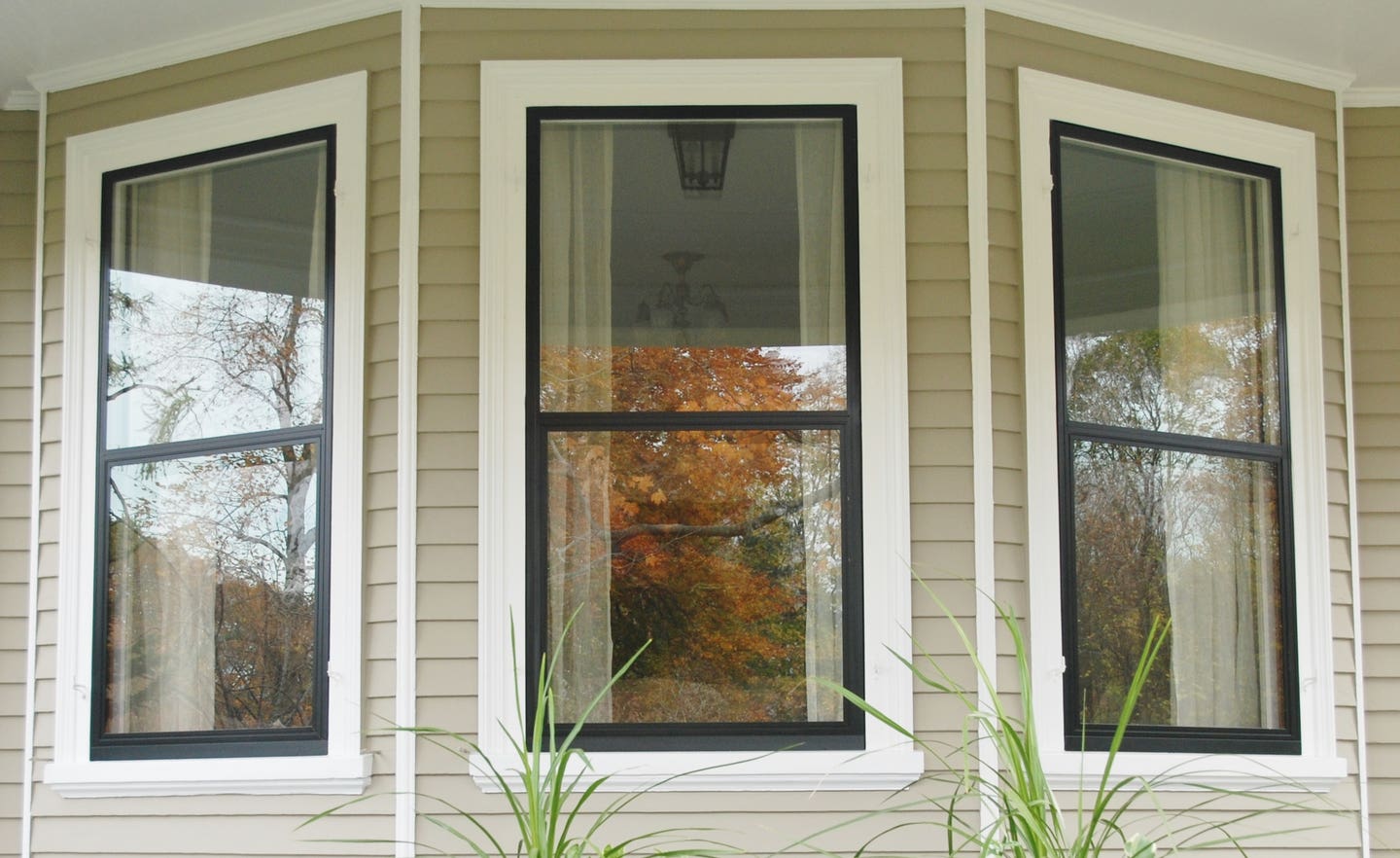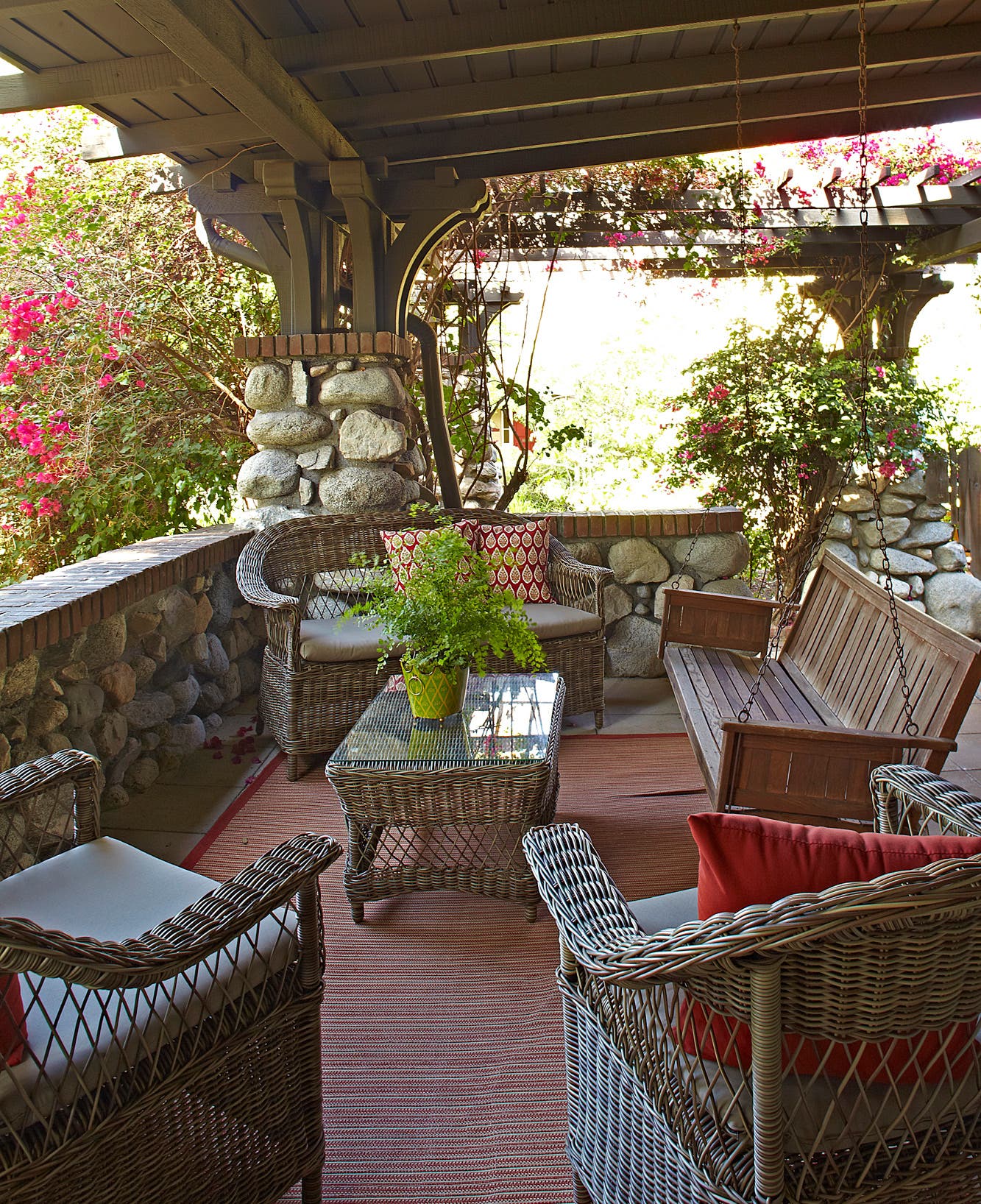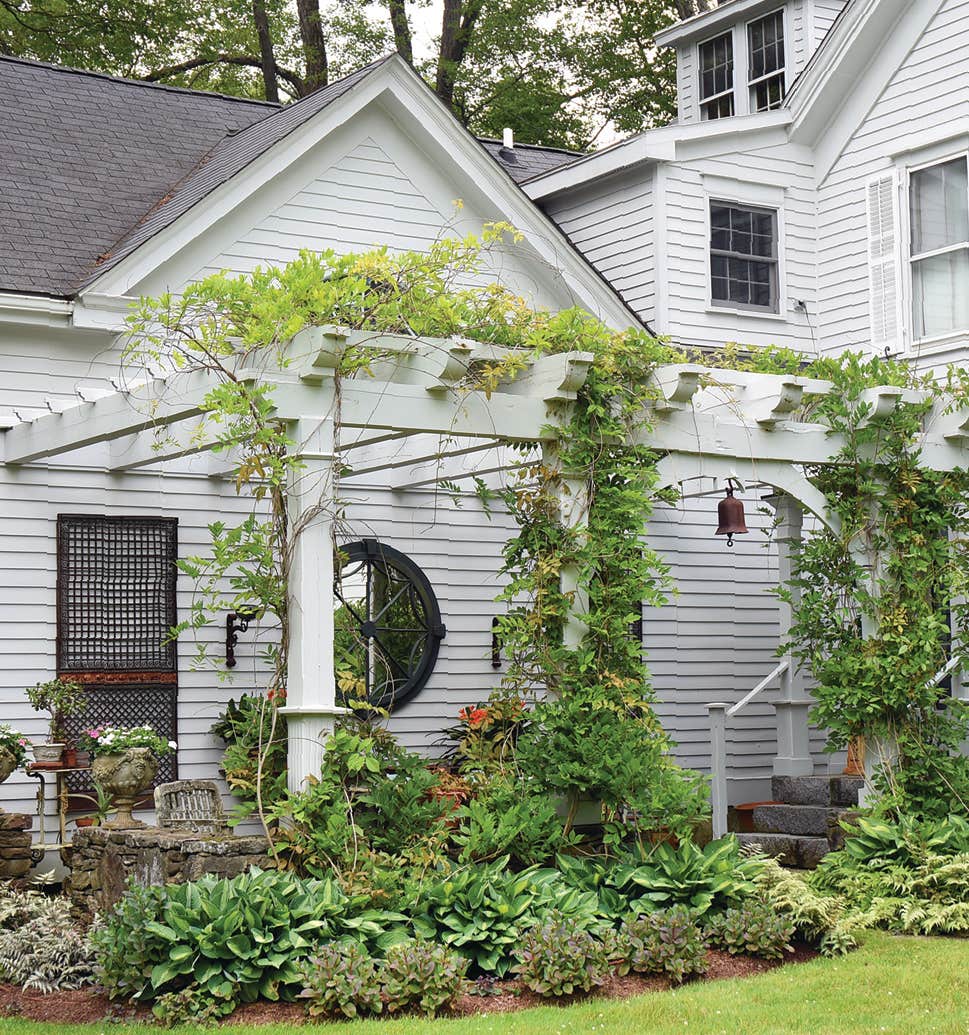Hardware at the Entry
Functional details here—outdoor hardware, mailbox, the bell or knocker—must be weatherproof and long-lasting. Besides, first impressions start at the entry door!
Don’t get too fussy, says Jon Eaton from House of Antique Hardware. He reminds us that a bit of mismatch is probably more authentic than a full suite of hardware and accessories from one source—even though his company can certainly provide just that. Many houses built in the early 20th century had a range of style influences, so it wouldn’t be unusual to find a plain but classic Colonial Revival latch on the oak door of a bungalow. Restorers today often prefer to select a hammered copper backplate and knob—a nice upgrade.
Keep scale in mind: Bigger may be better for a signature piece. Just don’t make every accessory an attention grabber. And don’t be afraid to mix finishes when it comes to hardware, the mail slot, house numbers, and porch light. Black iron, dark bronze, weathered copper, even antiqued brass can work together.
Mailbox
It can be a dowdy afterthought, or an easy way to add period style near the entry. Choose from the wide range of styles and finishes to either complement existing hardware or add an accent. Choose a box wide enough for magazines, etc. I personally like the 18"-wide, heavy-gauge, hand-hammered Arts & Crafts mailbox from House of Antique Hardware. I also appreciate the range of simple but elegant copper mailboxes, oxidized and burnished, from Waterglass Studios.
In Arts & Crafts period homes, mail slots were more common than boxes. Many vintage slots are too narrow for bulk mail; choose a “newspaper size” reproduction at least 11" wide. Look for a draft seal and heavy-duty flap springs. As in the old days, you can add a mail basket inside. Once again, House of Antique Hardware has that covered, with their woven basket that hangs on the door. You can also find wire mail baskets at hardware suppliers.
House Numbers
Ever notice how rare vintage address numbers are? House numbers were thrown away when the house was painted, and often the address changed when streets were renumbered. Number styles followed fads—they were popularly built into the porch light in the 1920s and ’30s. Whatever you choose today, keep practicality in mind: The numbers or number plaque should be easy to read, even at night, instantly visible, and resistant to weathering or rust. Lacquered finishes fail in wet areas.
Knockers & Bells
Most Arts & Crafts front doors had a solid iron or brass door knocker as a focal point. Don’t hang the knocker too high; a good recommendation is 4' to 5' from the ground on an 80" door (about two-thirds of the way up). In this period, the jarring buzzers of early electric doorbells were superseded by “ding dong” bells and then musical door chimes. Advertised as a way to soothe a housewife’s jangled nerves, musical chimes were considered the perfect housewarming gift in the 1920s and ’30s, and many houses had special niches for the chimes. Rejuvenation sells a handsome, hammered brass and rivet-head chimes unit. Doorbell wiring isn’t complicated, but make sure what you buy is compatible with the transformer (most are 17 volts); if you install new wiring, 18-gauge wire is recommended. Wireless (battery-powered) units are newly popular. Mission Furnishings carries a selection of wireless bell designs in styles from Greene & Greene to Glasgow.
Entry Hardware
The knob or latch assembly and lockset are key to the look of the door (pun intended). The width of the door helps determine the lockset. Modern doors built after the 1930s require hardware made for the circular lockset hole drilled into them. (House of Antique Hardware sells a “Conversion Door Set” for modern doors.) Earlier doors typically take a mortise lockset designed for the mortise slot cut into the edge of the door.
Strap hinges may be the thing to dress up your door. Whether functional or purely decorative, surface- or jamb-mounted, they should be substantial, ideally two-thirds the width of the door.
Brian D. Coleman, M.D., is the West Coast editor for Arts & Crafts Homes and Old House Journal magazines, our foremost scout and stylist, and has authored over 20 books on home design.



